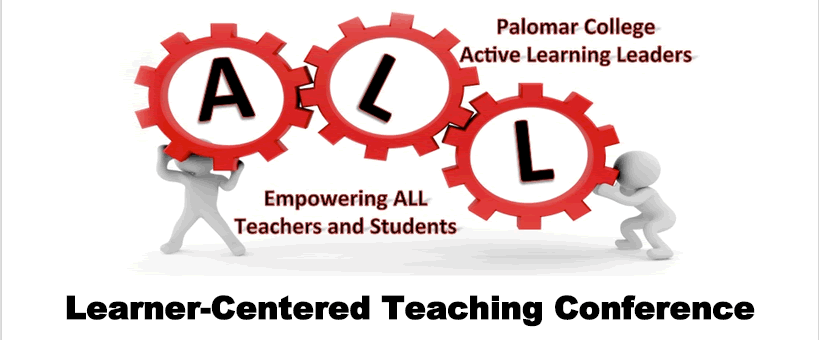Keynoter Dr. Alan Daly of UCSD got everyone started by equipping them with a positive attitude. He opened with an activity where participants asked someone they had not known before for his or her strength. He wanted all people to be part of a connected community that cares about each other, learns from each other, and thinks outside of the box in order to effect changes for the common good.
Our very own Katrina demonstrated a system where she divided her students into random groups by using color index cards and facilitated a process of developing group tests to exchange with other groups. This testing method will not trigger a negative reaction from the students because there are no trick or mean questions from a teacher.
Jorge Villalobos, who now teaches ESL 102 as well as English 50 and English 100, shared his own way of engaging his generation 1.5 student writers, who typically don't see the differences between spoken language and academic writing and couldn't care less about learning grammar and usage. He came up with a nicely-worded 5-rule strategy set to help his students develop their own awareness of the need to write clearly and concisely. Unlike Katrina, Jorge divides his students into groups in a very strategic way when they do peer reviews. A group will be designated to look at grammar, another group at punctuation, still another at meaning, etc. Members of a group are chosen based on their demonstrated strengths or needs.
Suzanne Woodward, another ESL colleague and a popular presenter, showed participants three new ways to force students to do reading homework and then engage with their classmates in the next class period.
Question Exchange
Upon reading an assigned article as homework, students must write a question on an index card. In the following class period, the teacher can collect the cards and pass them out randomly for answers. Or students can mingle and ask and answer the questions. With each new partner, they exchange the cards they have after their Q and A rendezvous. A variation of this activity is for the students to create two cards - one with the question and the other with the answer. In the classroom, the teacher collects both cards from all and redistributes them for a matching game.
Three Questions
This is an activity that is totally different from the one above. Students are to write three different questions on their cards:
- factual comprehension question
- opinion question
- extension question, i.e. one about something not in the article read, but related to the topic
In the next class, the teacher puts students in groups, collects the cards from each group, and redistributes them to a different group for answers.
Summaries
Students write a summary of what they read. In class, they turn in their individual summaries to the teacher, then get into groups to rewrite a group summary without referring to the original article (or their individual summaries, which have been turned in). They then must negotiate with group members regarding what info to include and what to leave out. Both individual and group summaries receive points.
Angela and Sheri also presented about our student mentor program.
What the participants learned were ways to motivate and empower our students so that not only will we not lose them, but they will become confident enough to take responsibility for their learning at school and beyond.

No comments:
Post a Comment